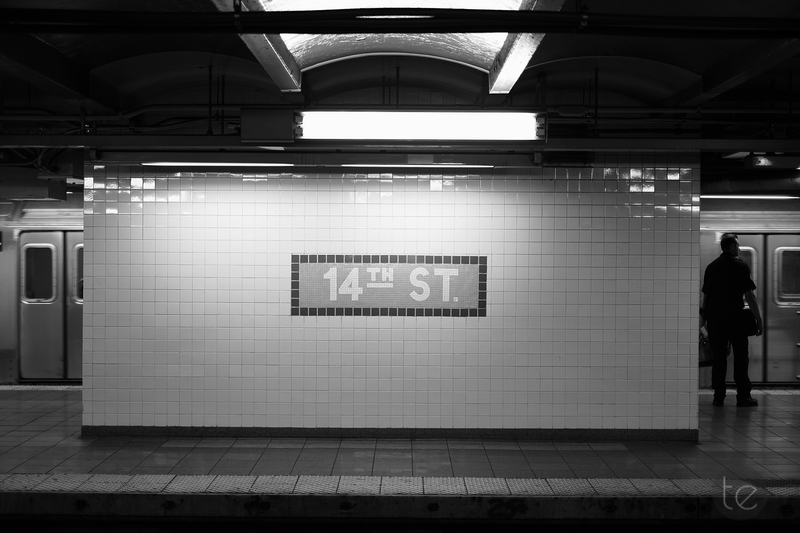
The New York City Subway is more than just a transportation system; it’s a microcosm of the city itself, bustling with life, energy, and an endless stream of stories. Amidst the rush of commuters and the screech of trains, lies a hidden gem that captures the essence of this underground world in a whimsical and thought-provoking way – Tom Otterness’ “Life Underground”.
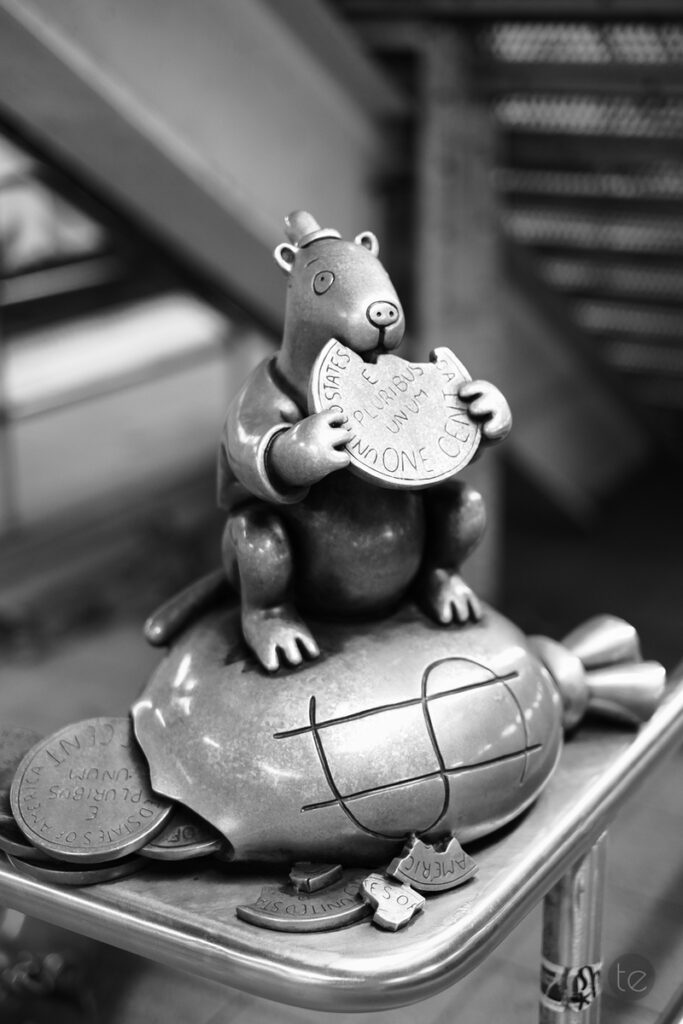
Commissioned by the Metropolitan Transportation Authority’s Arts for Transit program, this permanent public artwork graces the 14th Street/Eighth Avenue station, serving as a beacon of creativity amidst the concrete jungle. With a budget of $200,000, a mere one percent of the station’s renovation budget, Otterness embarked on a journey to bring his vision to life, one bronze sculpture at a time.
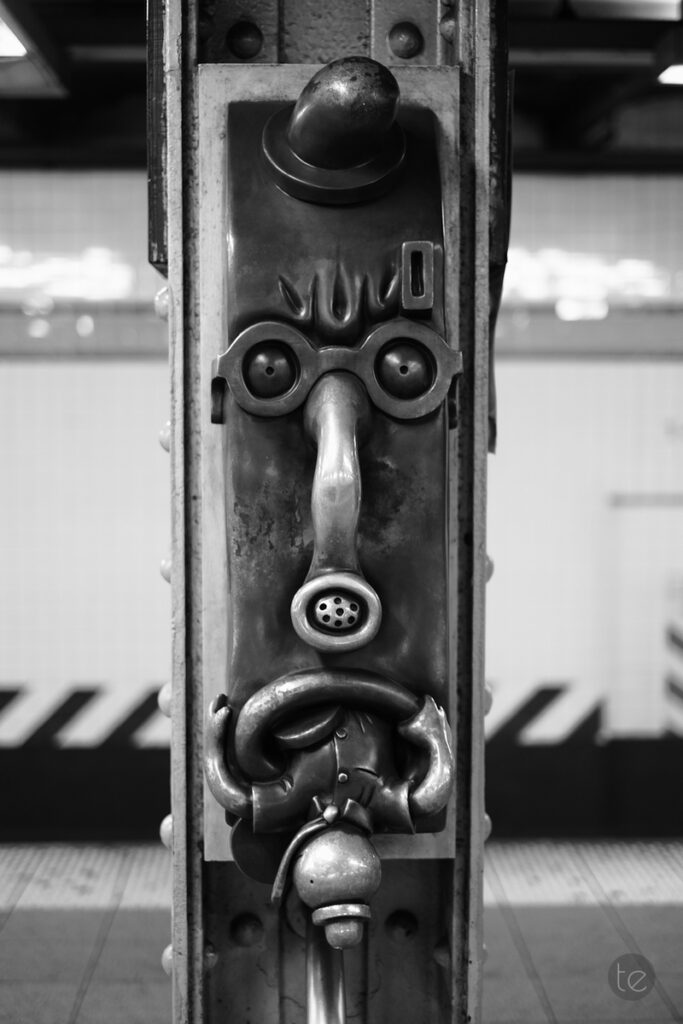
As commuters descend into the depths of the subway, they are greeted by a menagerie of characters, both human and animal, each frozen in a moment of time, telling their own unique stories. From businessmen with moneybag heads to a suit-wearing sewer alligator, Otterness’ creations blend humour with social commentary, inviting viewers to ponder the complexities of life in the city.
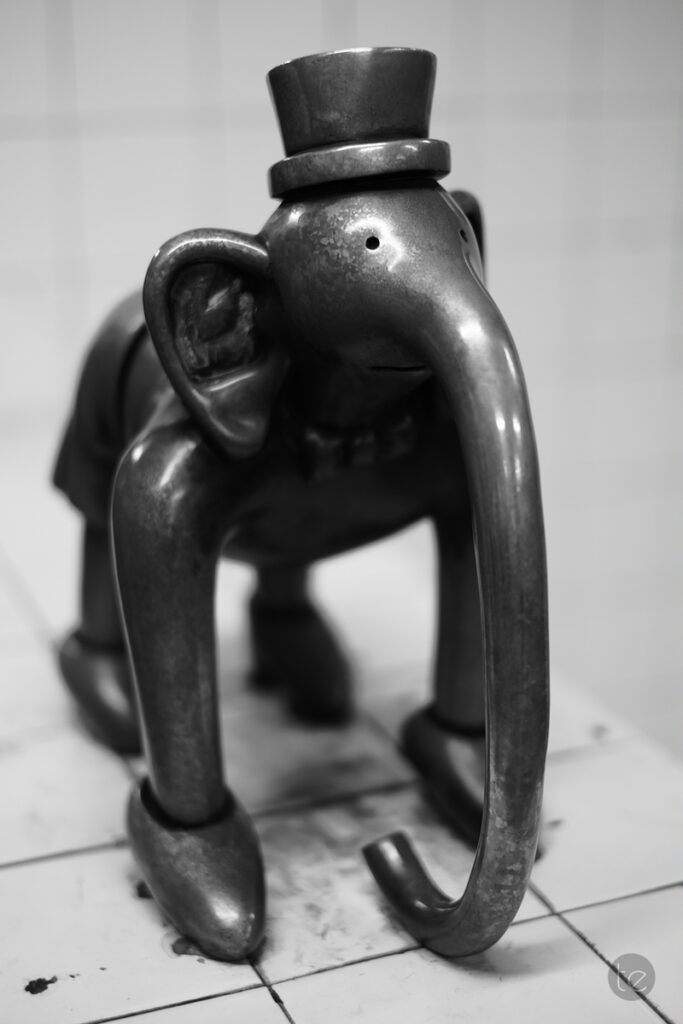
The installation itself is a testament to Otterness’ dedication and passion for his craft. Originally contracted to sculpt 20 bronze figures, he became so enamoured with the project that he ended up delivering over four times the amount of artwork he was initially commissioned for. His wife eventually had to intervene, urging him to halt the expansion before their daughter’s inheritance disappeared entirely.
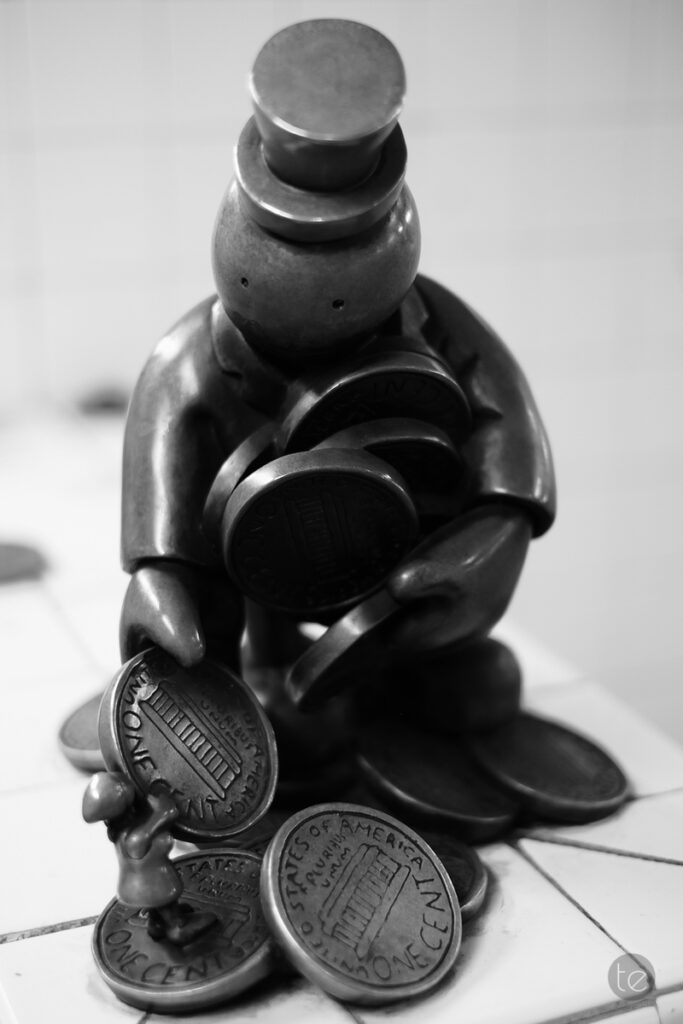
The journey from conception to completion spanned a decade, with pieces of the collection displayed in public spaces such as Central Park and Battery Park City to gauge public reaction. Finally, in 2000, approximately 25 pieces found their permanent home in the subway station, with the rest following in the subsequent years.
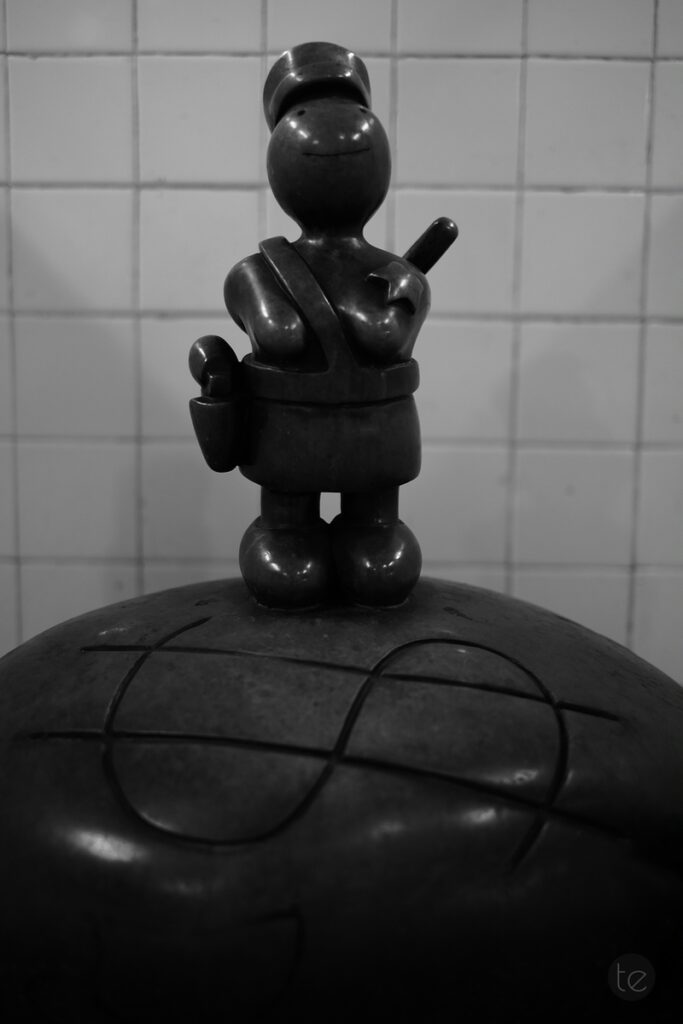
What sets “Life Underground” apart is its ability to resonate with people of all ages. Whether it’s a child gleefully interacting with the sculptures or an adult pausing to reflect on their meaning, Otterness’ work transcends barriers, sparking joy, curiosity, and contemplation in equal measure.
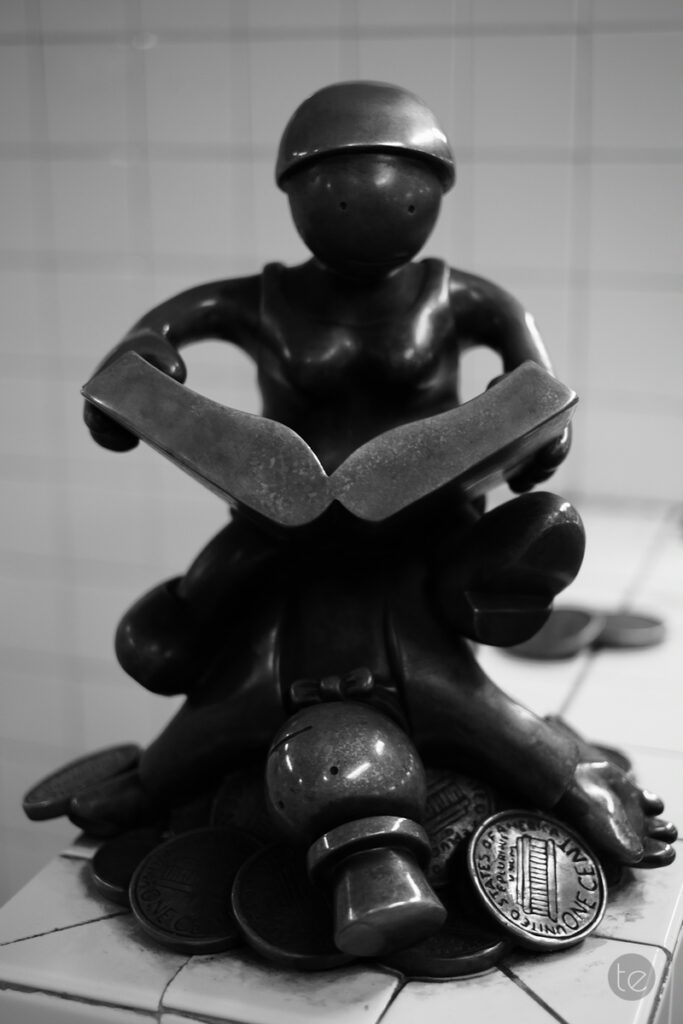
However, like any work of art, “Life Underground” is not without its critics. Some have labelled the sculptures as “too cute,” arguing that it dilutes the more critical edge of Otterness’ social commentary. Yet, perhaps therein lies the beauty of art – its ability to provoke discourse and interpretation, challenging us to see the world through a different lens.
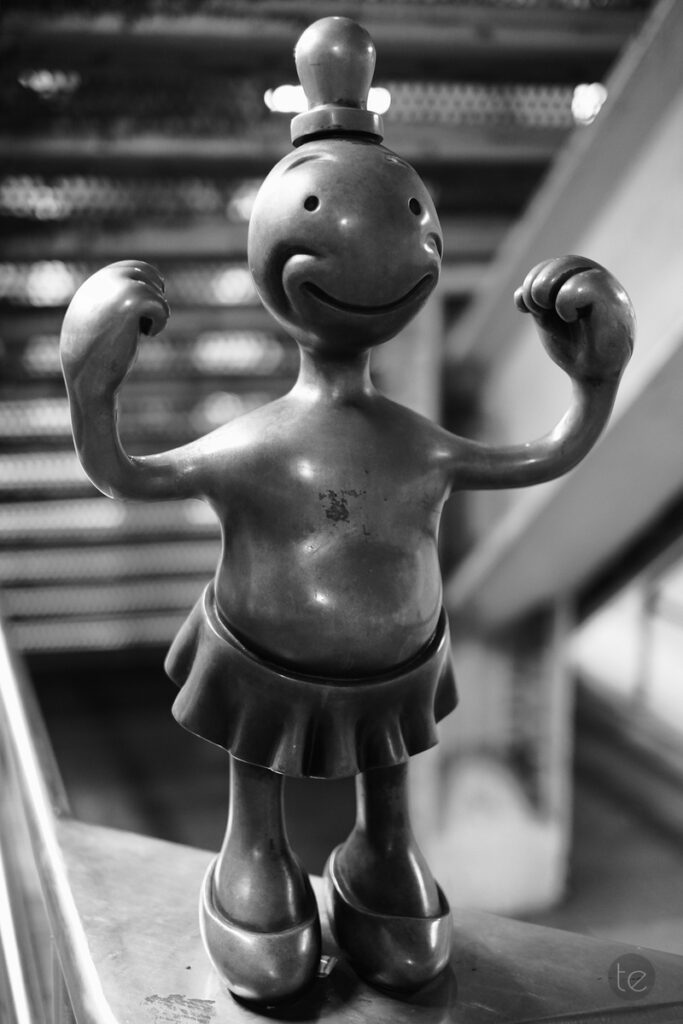
As commuters rush past these miniature bronze vignettes, it’s easy to overlook the intricate stories they tell. Yet, for those who pause to look closer, “Life Underground” offers a glimpse into the soul of New York City, reminding us that even in the depths of the subway, life – in all its complexities and contradictions – continues to thrive.

Thanks for visiting and reading. Consider subscribing to the Substack newsletter today to get the latest posts delivered directly to your mailbox. Please do not steal images from the website. All images are watermarked and copyrighted. Feel free to engage by leaving a comment below. Until next time.
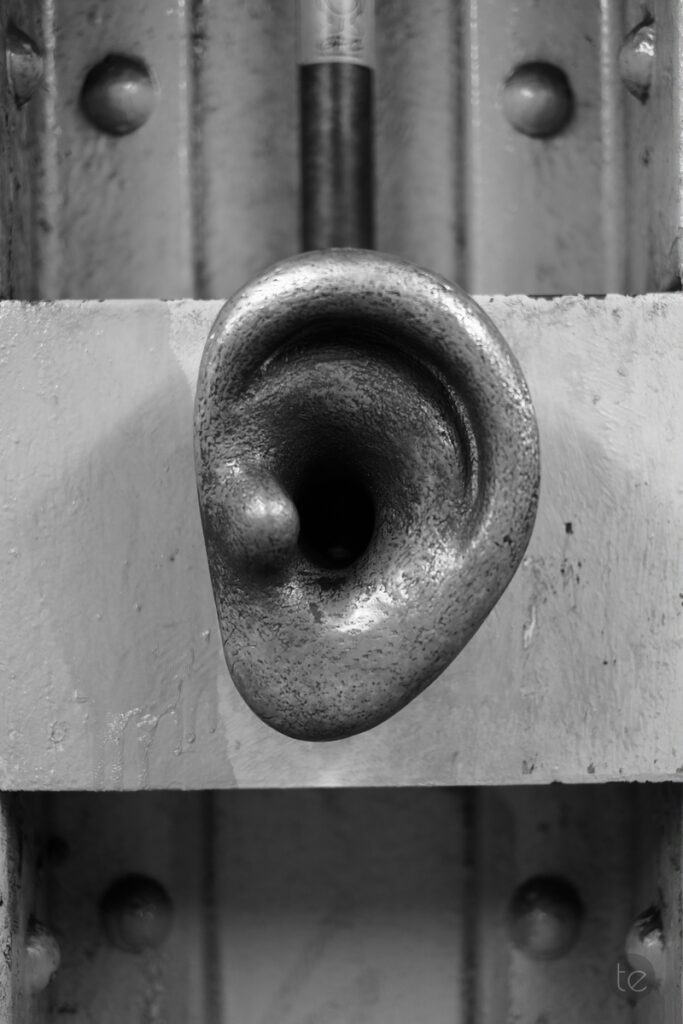
Here are 10 lesser-known facts about Tom Otterness’ “Life Underground” sculptures:
- Inspiration from Political Cartoons: Tom Otterness drew inspiration from 19th-century political cartoons, particularly those by Thomas Nast, known for his scathing depictions of Boss Tweed and the corruption of Tammany Hall. This influence is evident in the sculptures’ portrayal of figures with moneybag heads, subtly commenting on societal issues.
- Interactive Elements: While many view the sculptures from a distance, some pieces of “Life Underground” encourage interaction. For instance, the sewer alligator sculpture has been described as a popular spot for children to climb on and play around, adding an unexpected layer of engagement to the artwork.
- Public Display Pre-Installation: Prior to its installation in the subway station, portions of Otterness’ collection were put on public display in locations such as Central Park and Battery Park City. This allowed for public feedback and reactions, shaping the final composition of the installation.
- Delayed Installation: Originally scheduled for installation in 1998, “Life Underground” faced delays in its completion and placement. The entire project took a decade from commissioning to final installation, highlighting the meticulous attention to detail and extensive work involved.
- Exceeding the Commission: Otterness’ dedication to the project led him to produce far more artwork than initially commissioned. What was supposed to be 20 bronze figures expanded to over 100 individual pieces, showcasing the artist’s commitment to his vision.
- Family Intervention: The expansion of the collection reached such a point that Otterness’ wife had to intervene, urging him to stop before their daughter’s inheritance was depleted entirely. This anecdote adds a personal touch to the story behind the artwork’s creation.
- Social Commentary Through Sculpture: While “Life Underground” is often celebrated for its whimsical charm, it also carries a subtle undercurrent of social commentary. The sculptures, depicting various characters and situations, offer a satirical look at urban life and its complexities.
- Scattered Surprises: Otterness described the arrangement of the individual pieces as “scattered in little surprises,” inviting viewers to discover hidden narratives and details as they navigate the subway station. This element of discovery adds an element of intrigue to the overall experience.
- Budgetary Allocation: The allocation of $200,000 for “Life Underground” as part of the station’s renovation budget represents a mere one percent of the total budget. Despite this relatively modest investment, the artwork has become one of the most beloved and recognizable features of the subway system.
- Appeal Across Generations: While contemporary art installations often polarize audiences, “Life Underground” has managed to capture the hearts of people across generations. Its accessibility and universal themes make it a beloved fixture in the subway, enjoyed by commuters of all ages.
